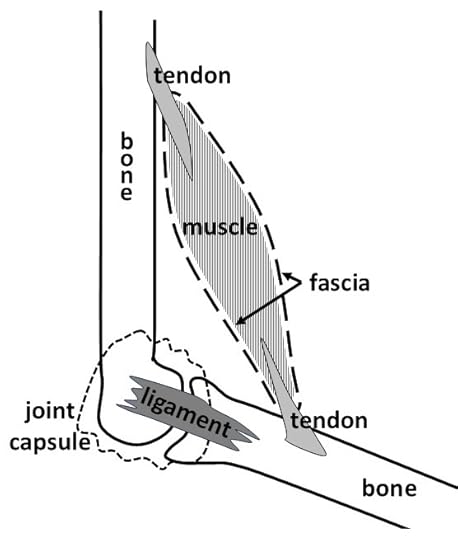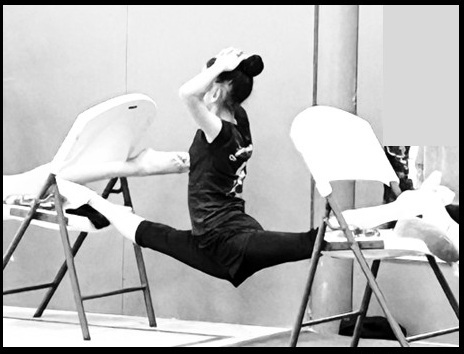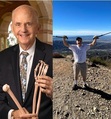Contortionism, Part I

It has been almost a year since I have reported on muscles and bones. That is because I have been working hard on a related topic that binds the musculoskeletal system together–ligaments. In their classic form ligaments span from bone to bone and allow joints to move in some directions and not in others, akin to hinge pins in the built world.
The manuscript is now at the publisher. Whew. As part of doing research for the book, I decided to “walk the walk” and give my ligaments a workout by taking a contortion lesson. Contortion is the performance art where extremely limber individuals showcase their flexibility in a choreographed set of moves and poses, often to music and while smiling continuously. For example, Cirque du Soleil features contortionists who dazzle audiences with their seemingly impossible postures, sometimes braced on just their hands, and then perhaps supporting one or more other performers on top of them. Some of the artists can also knot themselves up so that it is nearly impossible to describe how their various joints are positioned to achieve the pose.
A quick internet search provided the ten best contortion training facilities in Los Angeles, and I chose the Cirque School in Hollywood. Their website indicated that their performance-art classes included flexibility, handstands, trapeze, as well as aerial sessions for hoop, straps, rope, and fabric. Their website also had words of encouragement. “For anybody with any body.” That convinced me. After observing their Flexibility 101 class one evening, a week later I took a private lesson with the same instructor. Both times, other classes were going on in this large warehouse, which except for the entry area, was completely decked in thick squishy mats. Ropes, trapezes, and large rings dangled from the rafters. All the other students, predominately but not entirely women, were decades younger than me. To my surprise, not everyone was wiry; some approached stocky. (I consider myself in between.) I talked briefly to several students after class, to my instructor at length during my private session, and later to the owner, who formerly performed in the Cirque du Soleil. Here is what I learned.

Most contortionists discovered at an early age that they had some joints, particularly spine and hips, that were particularly “bendy.” (At age four, one famous contortionist could jump off the top of a bunk bed and land in a full split. Yow!) With the discovery of their unusual flexibility, they accentuate it by stretching daily for at least several hours. Contortionists generally are either “back benders” who can lean over backward and put their head between their knees or “front benders” who can lean forward and put their head between their ankles. However, that degree of suppleness in the spine ligaments in both directions is unusual. Hip flexibility is gained and maintained by prolonged positioning in a split-leg posture and performing “oversplits,” where the performer’s heels rest on two chairs with the body otherwise unsupported. It is not supposed to hurt, and apparently it does not, because I have seen people in that position blithely studying their cellphones or fingernails while the collagen in their ligaments is remodeling.
For me, even approaching 50% of a split position on the mat was what I describe as “sweet agony,” almost intolerable. My instructor said that it takes a month or two of regular work to stretch the muscles and keep them from reactively contracting and resisting the stretch. Then over the following months, the ligaments will begin to respond. During my hour-long session, I think I stretched every joint in my body except for my jaw and some toes—far deeper stretches than I have ever attempted or achieved in yoga or Pilates. I was perspiring at the end of my flexibility session, felt great for the rest of the evening, and, much to my relief, was not sore the next day. I continue to do some of the stretches, but I have no plans to run off and join the circus.
The post Contortionism, Part I appeared first on MuscleAndBone.Info.



